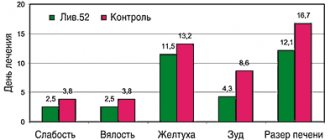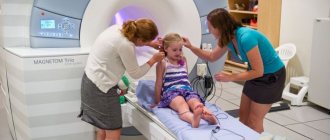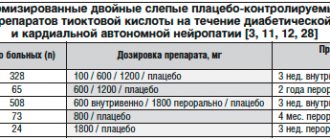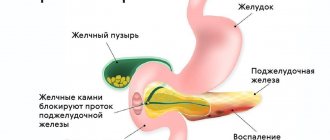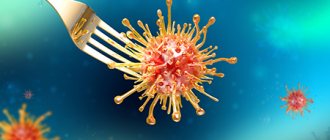Possibilities of using gopantam (pantogam) in pediatric practice
The pharmaceutical market annually offers practitioners new types and forms of medicines, often displacing medicines that are already well known to us. The domestic drug Pantogam avoided this fate. Many years of experience in using Pantogam not only confirms its traditional effectiveness, but also reveals new positive properties of this drug, which allows expanding the possibilities of its use in medicine. Under the trade name "Gopantam" the drug is produced by a pharmaceutical company (Biysk). Appearing on the domestic market in 1980, gopantam (pantogam) does not lose its popularity today, occupying a strong place in neuropediatrics, clinical psychiatry and neurology, neurogerontology, urology and nephrology.
Gopantam (pantogam, calcium gopanthenate) is a calcium salt of dioxydimethylbutyryl-GABA, similar in structure and pharmacological properties to both GABA and pantothenic acid. The drug has a mild stimulating effect on the nervous system, has antihypoxic and antioxidant properties, increases the brain's resistance to the effects of toxic substances, and stimulates anabolic processes in neurons. In pediatric practice, this drug is prescribed more often than other nootropics, since it practically does not cause side effects and has important additional properties: anticonvulsant activity, moderate sedative effect, the ability to reduce motor excitability while simultaneously enhancing performance and mental activity, the ability to increase the overall tone of the body, improve metabolic processes [1].
Indications for prescribing Pantogam in pediatrics were initially limited. It was used to treat children with mental disabilities, mental retardation, delayed speech development, stuttering (mainly clonic form), as well as in the rehabilitation of children who suffered neuroinfections or suffered traumatic brain injury [2].
In addition, the drug has been successfully used and is currently used to treat children suffering from epilepsy with slow mental processes, polymorphic seizures or minor epileptic seizures, usually in combination with anticonvulsants; for various mental disorders in combination with antipsychotics and antidepressants. Gopantam is prescribed for the correction of side effects of neuroleptic drugs, for neuroleptic extrapyramidal syndrome (hyperkinetic and akinetic), as well as for prophylactic purposes simultaneously with neuroleptic drugs as “cover therapy” [3].
The drug reduces reactions to painful stimuli, providing a moderate analgesic effect, and potentiates the effect of local anesthetics (novocaine). It is known that gopantam also has a short-term hypotensive effect [4].
Gopantam (pantogam) has been widely used in neonatology and early childhood neurology, in particular, in the treatment of perinatal encephalopathy in its early and late periods. At the same time, metabolic processes in the nervous tissue noticeably improve, the brain’s resistance to hypoxia increases, and convulsive readiness decreases [5]. Clinically, children’s anxiety disappears or is significantly reduced, sleep, muscle tone, speech functions are normalized, and psychomotor development approaches the age norm. It has been noted that the earlier the treatment of perinatal encephalopathy with nootropics is started, the fewer the consequences of ischemic-traumatic damage to the central nervous system in the child in the long-term period.
When taken orally, the drug is quickly absorbed from the gastrointestinal tract and penetrates well through the blood-brain barrier, reaching maximum concentration in the brain an hour after administration. It does not accumulate in the body and has low toxicity, which is especially valuable in pediatric practice.
In older children, gopantam is prescribed for psycho-emotional overload, decreased mental and physical performance (to facilitate concentration and improve memory), as well as for severe forms of school maladjustment in children, usually due to hyperkinetic disorders leading to academic failure, behavioral disorders, and aggressiveness etc.
Gopantam is included in the complex therapy of cerebral palsy and other diseases of the central nervous system accompanied by convulsive syndrome.
For psychoneurological pathology, gopants are recommended for children in a single dose of 0.25 - 0.5 g, a daily dose of 0.5 - 3 g in courses of 1 - 4 months, sometimes up to 6 months. Repeated courses of treatment are usually prescribed after 3 to 6 months. Taking into account the nootropic effect of the drug, it is taken in the morning and afternoon [3]. In this case, it is practiced to increase the dose of gopantam over 7–12 days, take the maximum dose for 15–40 days or more, and gradually reduce the dose over 7–8 days. until the drug is completely discontinued. The minimum break between courses is 1 month.
In pediatric nephrurology, gopantam (pantogam) has been used for more than 10 years, as it has been discovered to have a corrective effect on detrusor-sphincter dyssynergia with the cessation of urination disorders during the day and night, to normalize bladder function in case of pollakiuria, urgency, imperative urination , urinary incontinence and enuresis [6]. I.B. Osipov and L.P. Smirnova (2001) recommend using pantogam for severe detrusor hyperreflexia in children with neurogenic bladder dysfunction at a dosage of 0.25 - 0.5 g 3 times a day after meals in courses from 1 to 3 months.
It is also known that when using gopantam (pantogam), the function of the colon is often restored, fecal incontinence and stool loss cease [1].
In our studies, gopantam (pantogam) showed high effectiveness (83.7%) when included in the treatment regimens of 43 children with neurogenic bladder dysfunction (versus 53.2% overall effectiveness in 47 children who received traditional therapy using anticholinergics) [7 ]. It was noted that in the group of children who received pantogam at a dose of 0.25 - 0.5 g 3 times a day in combination with physiotherapeutic methods of treatment (warming the bladder area, DDT courses according to Kuznetsova, etc.), in 6 enuresis was stopped more often than in the control group (37.2% versus 6.4%). This effect was especially noticeable in the subgroup of children aged 4 to 7 years (30% versus 4.8%), when doctors in most cases first begin to interpret enuresis as a symptom of the disease.
As a result of studying the anamnesis of examined children with neurogenic bladder dysfunction, a probable influence of pantogam on the maturation of the structures responsible for the full act of urination was revealed. From a retrospective analysis of the medical records of children, it follows that among patients who were under dispensary observation for perinatal encephalopathy in the 1st year of life and received courses of monotherapy with Pantogam or in combination with other drugs (Cavinton, B vitamins, etc.), after 3.5 - 4 years of age, enuresis was observed only in 6.7% of cases, while in children who did not undergo such treatment in the 1st year of life, enuresis was subsequently recorded in 85.7% of cases, the same as served as a reason to consult a doctor [7].
Of the side effects possible when taking gopantam (pantogam), only rare allergic reactions in the form of rhinitis, conjunctivitis, and skin rashes have been reported [2, 4]. In our studies over the entire period of use of Pantogam in children with neurogenic bladder dysfunction, we did not observe any unwanted side effects of this drug. There are few contraindications for the use of gopantam. It should not be used in cases of severe kidney disease in children or in cases of hypersensitivity to the drug [3–4].
It should be remembered that the effect of gopantam is enhanced by its simultaneous use with glycine and xydiphone. Gopantam prolongs the effect of barbiturates, enhances the effects of anticonvulsants, nootropics and other stimulants of the central nervous system. When used together, gopantam prevents the side effects of phenobarbital, finlepsin and, as mentioned above, neuroleptics.
Undoubtedly, gopantam can be classified as a “socializing” drug, since it can significantly improve the quality of life of children, and in a variety of situations that cause psychological and social discomfort for the child: from increased aggressiveness, “unfriendliness” in a team to inconvenience associated with enuresis. The data obtained allow us to recommend wider use of this drug in pediatric practice.
Gopantam®
Inside, 15-30 minutes after eating. Single dose for adults
usually 250-1000 mg,
for children
- 250-500 mg; daily dose for adults - from 1500 mg to 3000 mg, for children - from 750 mg to 3000 mg. The course of treatment is from 1 to 4 months, in some cases up to 6 months. After 3-6 months, a second course of treatment is possible.
For cognitive impairment with organic brain lesions, including the consequences of neuroinfections, traumatic brain injuries and neurotic disorders
: 250 mg 3-4 times a day.
For extrapyramidal hyperkinesis in patients with hereditary diseases of the nervous system in combination with the therapy:
at a dose of 500 mg to 3000 mg per day. The course of treatment is up to 4 months or more.
As a corrector for the side effects of neuroleptic drugs, for neuroleptic extrapyramidal syndrome (hyperkinetic and akinetic), as part of complex therapy for cerebral organic failure in patients with schizophrenia:
adults - in a dose of 500 mg to 1000 mg 3 times a day; children - in a dose of 250 mg to 500 mg 3-4 times a day. The course of treatment is 1-3 months.
For epilepsy with slowing of mental processes in complex therapy with anticonvulsants
: adults - in a dose of 500 mg to 1000 mg 3 times a day; children - in a dose of 250 mg to 500 mg 3-4 times a day. The course of treatment is up to 6 months.
For psycho-emotional overload, decreased mental and physical performance, to improve concentration and memory
I: 250 mg 3 times a day.
For neurogenic urinary disorders
: adults - in a dose of 500 mg to 1000 mg 2-3 times a day; children - in a dose of 250 mg to 500 mg 3 times a day (daily dose is 25-50 mg/kg). The course of treatment is 1-3 months.
Children with various pathologies of the nervous system
depending on age, the drug is recommended at a dose of 1000-3000 mg per day.
Tactics for prescribing the drug: increasing the dose over 7-12 days, taking the maximum dose for 15-40 days and gradually reducing the dose until Gopantam® is discontinued over 7-8 days. The break between courses of Gopantam®, as for any other nootropic drug, ranges from 1 to 3 months.
Children with developmental delays
: 500 mg 3-4 times a day. The course of treatment is 2-3 months.
Children with attention deficit hyperactivity disorder
: depending on body weight, the drug is prescribed at an average therapeutic dose of 30 mg/kg per day, morning and afternoon. The optimal dose is determined for each patient individually by selection with a gradual increase in dose over the first 5-7 days. The course of treatment is 3-4 months.
Children with neurosis-like conditions (tics: stuttering, mainly clonic form)
: in a dose of 250 mg to 500 mg 3-6 times a day. The course of treatment is 1-4 months.
Pantogam
Pantogam (INN hopantenic acid) is a domestic nootropic drug from the pharmaceutical industry. Available in the form of tablets and syrup. A wide range of therapeutic activity and a favorable safety profile have led to the popularity of nootropics in a variety of areas of medicine. There is no generally accepted classification of nootropics at the moment, but most pharmacologists tend to distinguish two main groups: classical nootropics (with a predominant mnestic effect) and neuroprotectors. In addition to the nootropic effect, neuroprotectors are able to stimulate metabolic processes in the brain, promote the restoration of cerebral tissues in case of various injuries, and increase the resistance of neurons to the effects of unfavorable exogenous or endogenous factors. During clinical trials, other effects of neuroprotectors were established: membrane stabilizing, antioxidant, antihypoxic. Pantogam is one of the most prominent representatives of the subgroup of neuroprotectors. Having appeared on the market several years before, perhaps, the most important nootropic, with whose name the name of the pharmacological group is associated - Piracetam, Pantogam has been successfully used in medicine for four decades. In its chemical structure, the drug is the highest homologue of gamma-aminobutyric acid (GABA), later called hopantenic acid. This compound was synthesized in Japan in the early 50s of the last century. It came to the attention of Soviet pharmaceutical technologists and pharmacologists due to the presence of the GABA molecule in its structure, which, in turn, is one of the key neurotransmitters. Being a natural metabolite of GABA, hopantenic acid is a more promising compound, i.e.
is endowed with the property of penetrating the blood-brain barrier and regulating the functional activity of brain neurons. Pantogam has a nootropic and anticonvulsant effect, increases the resistance of brain tissue to oxygen starvation and the effects of toxins, activates anabolism in nerve cells, increases mental and physical performance, and facilitates the regeneration of cerebral tissues after damage. Four decades of use of the drug in clinical practice have exhaustively confirmed its effectiveness and favorable safety profile. Pantogam is indicated for use in the prevention of diseases of the central nervous system (with psycho-emotional overload, excessive stress, autonomic pathology, etc.), treatment of organic and functional disorders of the central nervous system. Among other nootropics, Pantogam stands out for its antiepileptic activity, which allows the drug to be used as an adjuvant in the treatment and prevention of attacks of this disease. The experience of using Pantogam in pediatric practice deserves special mention. Over the past few decades, cases of the development of cognitive disorders in children in the absence of organic diseases of the central nervous system have become more frequent. This is primarily due to increased intellectual and emotional stress in kindergartens and schools. These include attention deficit disorder, psychovegetative and asthenoneurotic syndromes. Clinical and post-marketing studies of Pantogam have confirmed its effectiveness in correcting the above-mentioned syndromes and normalizing the cognitive functions of children and adolescents.
Gopantomid®
Inside, 15-30 minutes after eating.
A single dose for adults is usually 250-1000 mg, for children - 250-500 mg; daily dose for adults - from 1500 mg to 3000 mg; for children - from 750 mg to 3000 mg.
For cognitive impairment with organic brain lesions, including the consequences of neuroinfections, traumatic brain injuries and neurotic disorders
: 250 mg 3-4 times a day.
For extrapyramidal hyperkinesis in patients with hereditary diseases of the nervous system
in combination with ongoing therapy: in a dose of 500 mg to 3000 mg per day. The course of treatment is up to 4 months or more.
As a corrector for the side effects of neuroleptic drugs, for neuroleptic extrapyramidal syndrome (hyperkinetic and akinetic), as part of complex therapy for cerebral organic failure in patients with schizophrenia:
adults - in a dose of 500 mg to 1000 mg 3 times a day; children - in a dose of 250 mg to 500 mg 3-4 times a day. The course of treatment is 1-3 months.
For epilepsy with slow mental processes
in complex therapy with anticonvulsants: adults - in a dose of 500 mg to 1000 mg 3 times a day; children - in a dose of 250 mg to 500 mg 3-4 times a day. The course of treatment is up to 6 months.
For psycho-emotional overload, decreased mental and physical performance, to improve concentration and memory
: 250 mg 3 times a day.
For neurogenic urinary disorders:
adults - in a dose of 500 mg to 1000 mg 2-3 times a day; children - in a dose of 250 mg to 500 mg 3 times a day (daily dose is 25-50 mg/kg). The course of treatment is 1-3 months.
Children with various pathologies of the nervous system
depending on age, the drug is recommended at a dose of 1000-3000 mg per day. Tactics for prescribing the drug: increasing the dose over 7-12 days, taking the maximum dose for 15-40 days and gradually reducing the dose until discontinuation of Hopantenic acid over 7-8 days.
The break between course doses of Hopanthenic acid, as for any other nootropic drug, ranges from 1 to 3 months.
For children with developmental delays:
500 mg 3-4 times a day. The course of treatment is 2-3 months.
For children with attention deficit hyperactivity disorder:
Depending on body weight, the drug is prescribed at an average therapeutic dose of 30 mg/kg per day, morning and afternoon. The optimal dose is determined for each patient individually by selection with a gradual increase in dose over the first 5-7 days. The course of treatment is 3-4 months.
For children with neurosis-like conditions (tics; stuttering, mainly in the clonic form):
in a dose of 250 mg to 500 mg 3-6 times a day.
The course of treatment is from 1 to 4 months, in some cases up to 6 months. After 3-6 months, a second course of treatment is possible.
Taking into account the noopropic effect of the drug, it is preferably taken in the morning and afternoon (before 17:00).
The drug is used in children over 3 years of age. At an earlier age, it is recommended to take the drug in syrup dosage form.
